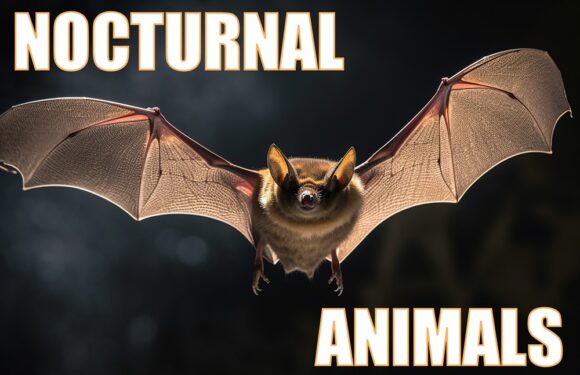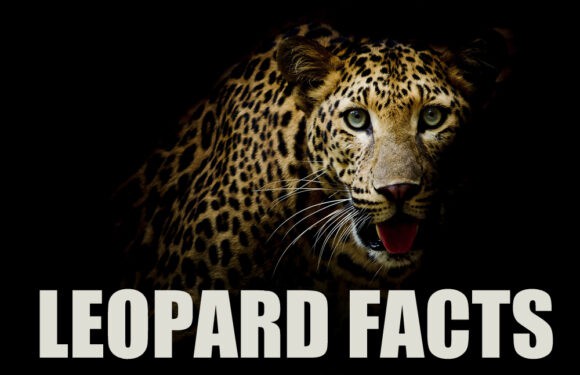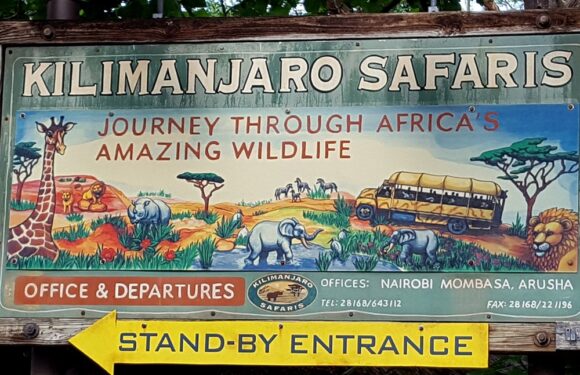
What is a Baobab?
The baobab tree, often dubbed the “upside down tree,” is one of Africa’s most visually unique plants. It features a massive trunk, sprawling branches, and a lifespan that can stretch over millennia.
Baobabs are known for their distinct physical characteristics which set them apart from other trees. They have thick trunks can reach up to 98 feet (30 meters) in circumference and branches that spread out to create a canopy. These branches have an interesting appearance, resembling roots stretching towards the sky, which is why the baobab is nicknamed the “upside down tree.”

Baobabs range in height, from 20 to 100 feet (5 to 30 meters). Some trees are believed to be over 1,500 years old, and legends suggest that they could be much older. The tree’s life cycle includes a lengthy period of growth followed by a flowering phase that attracts a variety of pollinators, including bats and bees, essential for the production of the baobab fruit.
What Adaptations Do Baobab Have?
Baobab trees have adaptations that enable them to thrive in some of the world’s most challenging arid environments.
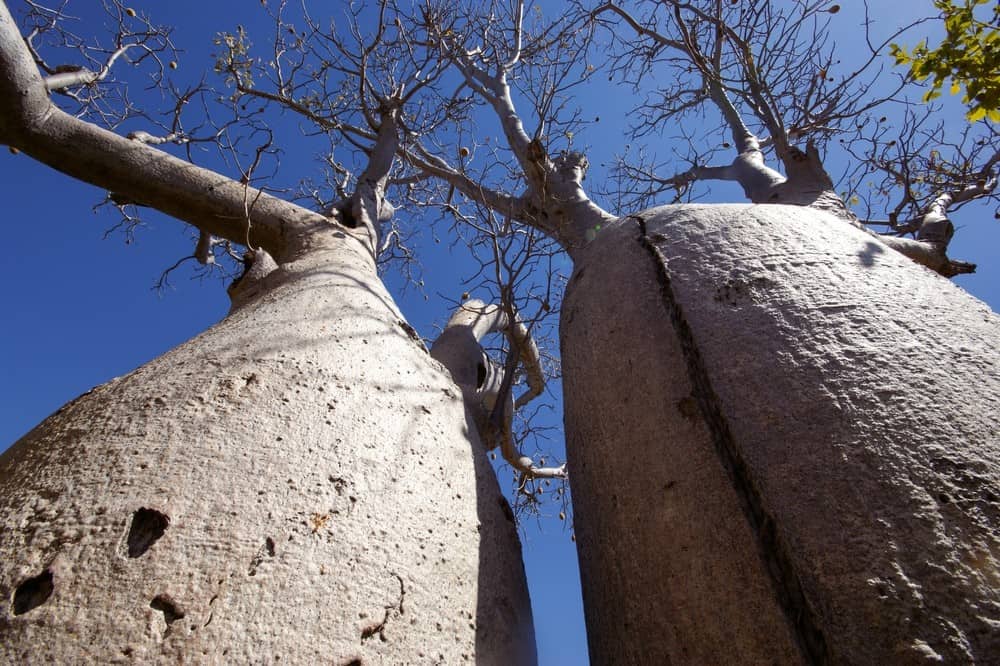
Baobabs have a widespread root system that can extend great distances from the trunk. This enables them to access water from a larger area. Its swollen trunk functions as a water storage tank that can hold up to 31,700 gallons (120,000 liters) of water. During the rainy season, the tree absorbs and stores water to use during drier months. Additionally, they shed their leaves during the dry season to reduce water loss through transpiration. This minimizes the amount of water the tree needs to survive when it’s scarce.
Interestingly, baobabs can perform photosynthesis in their trunk and branches, not just their leaves. This allows them to continue growing and producing energy without leaves. The bark of the tree is fire-resistant, which protects it from bushfires, a common occurrence in their natural habitats.
Where Do Baobab Grow?
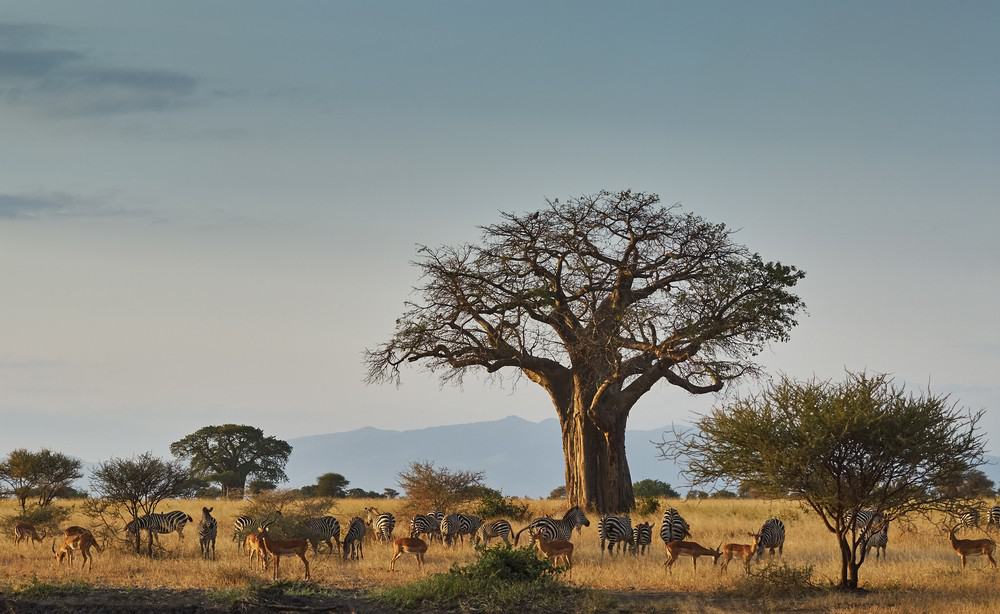
The baobab tree is not a singular species but belongs to the genus Adansonia, which comprises several species. Baobabs are predominantly found in Africa, with a distribution that spans from the sub-Saharan region to Madagascar and Australia.
African Baobab (Adansonia digitata)
The African baobab, or Adansonia digitata, is the most famous species, known for its immense size and longevity. Found in the savannahs of Africa, this species is distributed from Senegal on the west coast to Somalia on the east coast, and as far south as South Africa.
Madagascar Baobabs
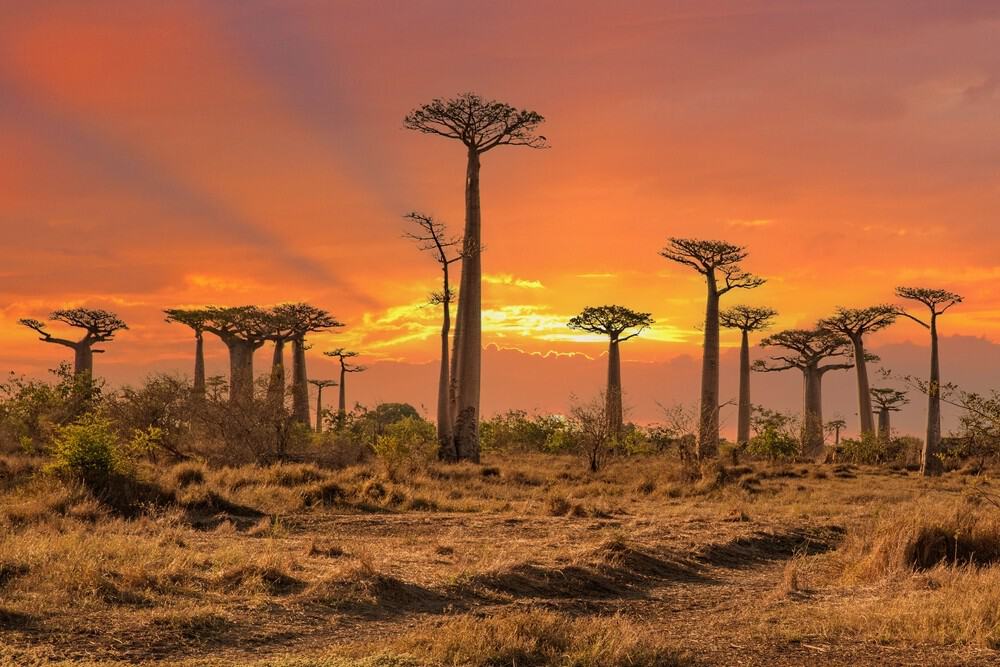
Madagascar is home to six species of baobabs. These include:
- Madagascar Baobab (Adansonia madagascariensis)
- Fony Baobab (Adansonia rubrostipa)
- Montane Baobab (Adansonia montana)
- Suarez Baobab (Adansonia suarezensis)
- Grandidier’s Baobab (Adansonia grandidieri)
- Perrier’s Baobab (Adansonia perrieri)
The Madagascar Baobab and Fony Baobab species are widespread across Madagascar. The Montane Baobab is unique for its habitat in the mountainous regions. The Suarez Baobab, Perrier’s Baobib, and Gradidier’s Baobab are all endangered species, withe the latter two being critically endangered. Less than 250 mature Grandidier’s Baobab trees remain.
Australian Baobab (Adansonia gregorii)
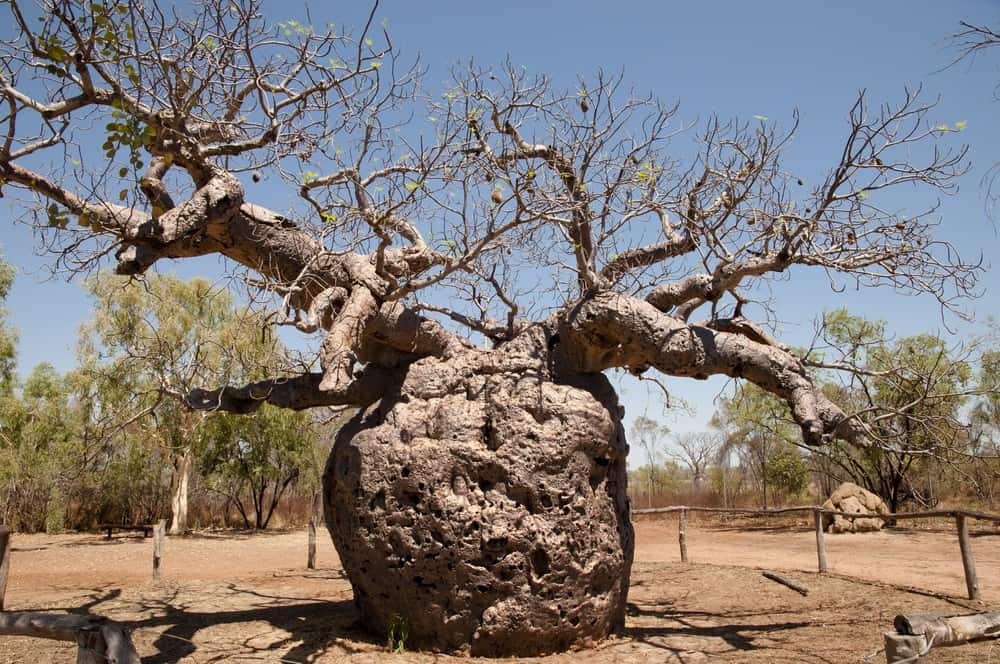
Also known as the boab, the Australian baobab is native to the northwestern part of Australia. It has a bottle-shaped trunk and large white flowers that bloom at night.
The Enigmatic Baobab of the Arabian Peninsula (Adansonia kilima)
Recent genetic studies have suggested the existence of another species, Adansonia kilima, primarily found in Africa but also possibly in the Arabian Peninsula. This species is adapted to mountainous and highland terrains.
Why Are Baobab Important?
Another nickname for the baobab is “The Tree of Life.” It is a symbol of endurance, longevity. As a keystone species, baobabs support the surrounding biodiversity, offering food, shelter, and resources to a wide range of animals and plants.

The baobab’s flowers, fruit, leaves, and bark are utilized by everything from elephants and monkeys to birds and insects. The flowers serve as nutrient sources for various animals and fruit even during dry periods to provide sustenance when other food sources are scarce. Moreover, the tree acts as a microhabitat in itself. Its crevices and cavities provide nesting and roosting spaces for birds and bats,
What is the Tale of the Upside Down Tree?
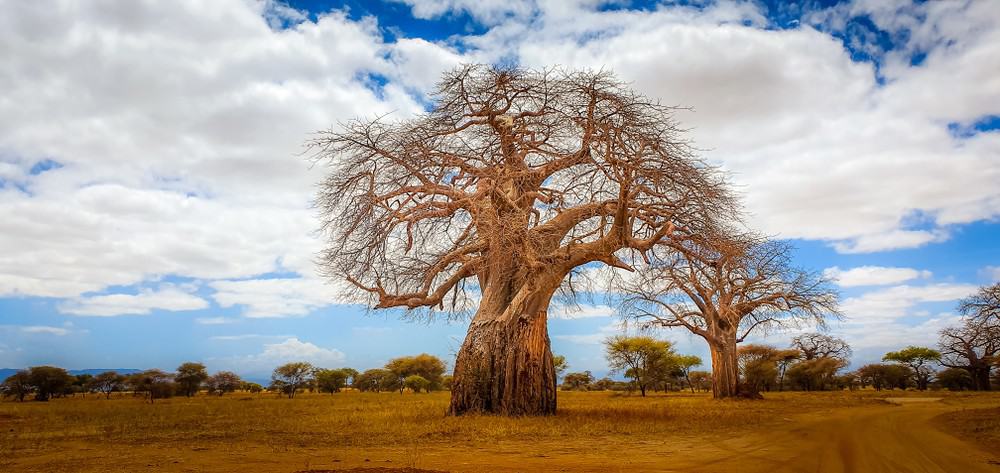
Beyond its ecological role, the baobab tree is deeply ingrained in African culture and legend. It is often the center of community life and ceremonies. Many African tribes believe the baobab was planted upside down by the gods, owing to its peculiar shape, imbuing it with magical properties. The story of the baobab tree’s creation goes like this.
In the beginning, when the Earth was young, the gods planted trees across the land, each carefully chosen for its place in the world. The baobab was among the last to be planted. Upon being placed into the earth, the baobab, filled with pride at its own striking appearance, complaines about its placement in the savannah and demanded to be moved to a lush, verdant valley. The gods decided to teach it a lesson in humility and replanted it upside down.
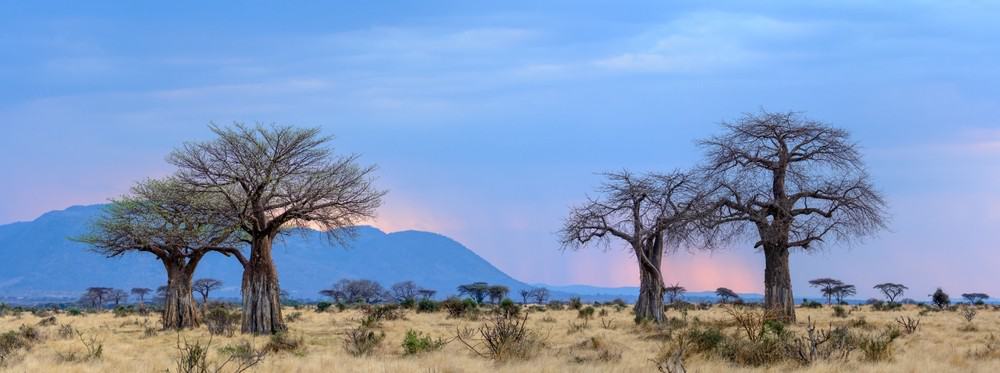
This tale explains the distinctive look of the baobab and also imparts wisdom about living in harmony with nature and each other.
How are Baobabs Used?
The baobab fruit is often called a superfruit due to its nutritional value. Encased in a hard shell, its powdery pulp is rich in vitamin C, dietary fiber, calcium, antioxidants, and essential minerals. This nutritional profile supports immune health, aids digestion, and can contribute to overall well-being. In Africa and increasingly across the globe, the fruit is utilized in a variety of ways—from traditional dishes and drinks to modern energy bars, smoothies, and supplements.

The trunk’s ability to store vast quantities of water is a resource in arid regions. Its bark can be made into rope, cloth, and baskets, while the leaves serve as fodder for livestock and are also consumed by humans in some cultures.
Baobab seeds yield oil rich in vitamins and omega fatty acids, used in cooking and cosmetics.
Finally, various parts of the baobab have been used in traditional African medicine to treat ailments from fevers to inflammation.
Where Can You See Baobabs?
Here are some places you can find baobab trees:
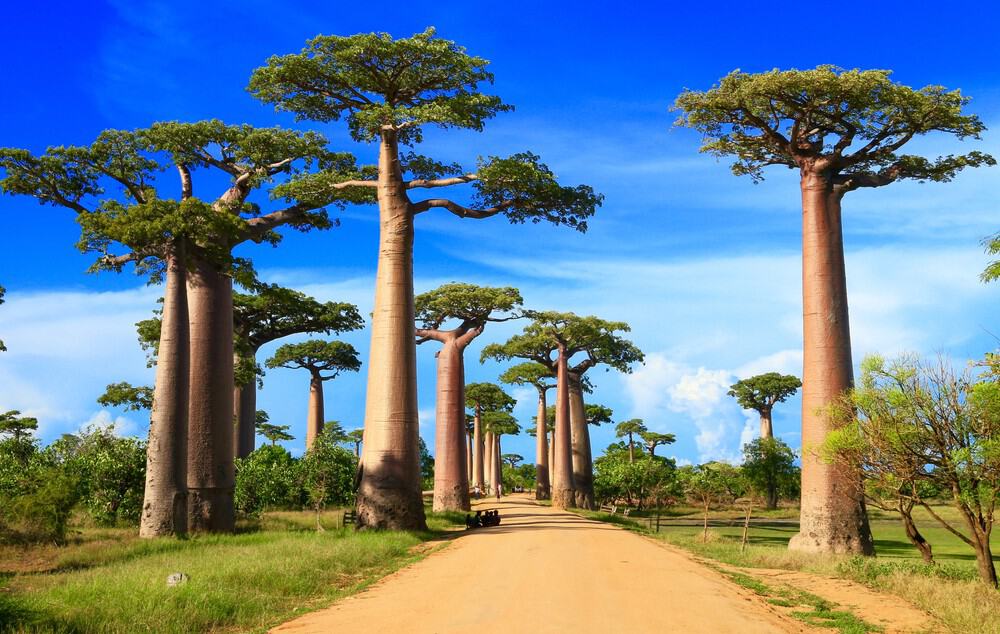
- Madagascar: The Avenue of the Baobabs, a dirt road between Morondava and Belon’i Tsiribihina, showcases a breathtaking landscape lined with these majestic trees.
- Senegal: The Bandia Reserve is noted for its ancient baobabs, some over a thousand years old. Baobab Alley features a remarkable collection of large baobab trees.
- Botswana: The Sunland Baobab in Modjadjiskloof was one of Africa’s largest and oldest baobabs until it split in 2017. The landscape around the Makgadikgadi Pans is dotted with many baobabs.
- South Africa: The Limpopo Province is known for its baobabs, including the Sagole Baobab, the largest living specimen in the country. Kruger National Park also hosts many baobabs.
- Tanzania: Tarangire National Park is famous for its baobab-dotted landscape, making these trees a popular feature of the park.
- Kenya: Coastal regions and areas near the Tsavo National Parks are home to Adansonia digitata.
- Zimbabwe: The Big Baobab of Beitbridge and the Baines’ Baobabs in Nxai Pan National Park are significant attractions. The latter were immortalized in paintings by the explorer Thomas Baines in the 19th century.
- Zambia: Kafue National Park is another location where baobabs are a common sight.
- Mozambique: The Quirimbas Islands off the coast are full of ancient baobabs, some believed to be over 2,500 years old.
- Namibia: The country’s arid environments, especially around the Caprivi Strip, are home to baobab trees.
- Mali: The sacred Baobab of Bougouni, or the “Baobab Amoureux”, consists of two baobab trees twisted together, creating a unique sight steeped in local legend and attracting visitors.
- Australia: The Australian baobab are found in the Kimberley region of Western Australia.
- Ghana: Baobabs are found in the northern savannah regions, where they are a source of food, fiber, and medicine for local people.
- Sudan: The baobab is present in various parts of Sudan, particularly in the Kordofan and Darfur regions. Its fruit, known locally as “gongoleis,” is highly valued for its benefits.
- Mauritania: Baobabs can be found in the southern regions.






















































